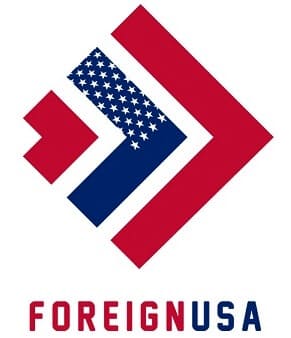Massachusetts first began to adopt its own official state symbols in 1780. Many more have been adopted since then, and their state symbols come in the form of state animals, mammals, a state bird and flower, fruits, dogs, reptiles, nicknames, state seals, and much more.
State symbols were adopted by states to best represent them and their historical roots, and past and present successes. Like all other states, there are many Massachusetts state symbols that epitomize the state and its geographical and geological makeup and we have listed them all for you.
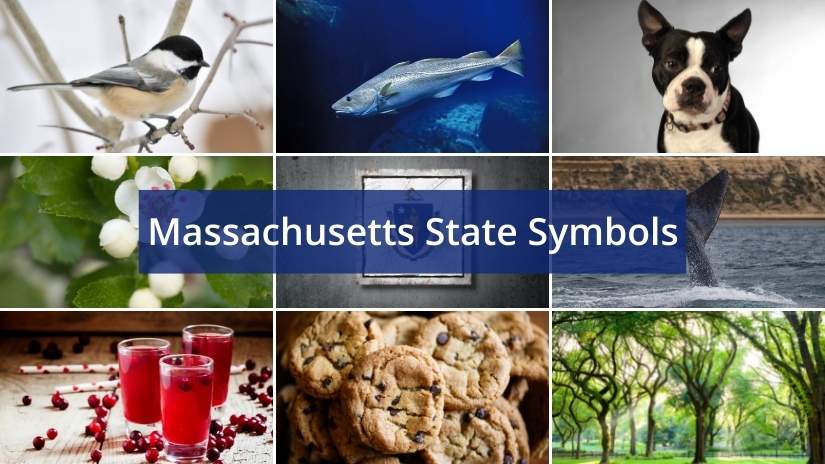
Massachusetts State Symbols List
There are an incredible amount of Massachusetts state symbols that have created many interesting facts about the state, both from the past and present.
We have detailed the most significant Massachusetts state symbols below and further down the page you will find a comprehensive list in table format displaying all the Massachusetts symbols and the dates that they were officially enacted.
Massachusetts State Bird
Massachusetts adopted the black-capped chickadee (Poecile atricapillus) as their official state bird back in 1941. These birds are truly stunning, showcasing a black cap and bib, with white cheeks and a gray back, they are curious and intelligent birds that do not migrate which means that Massachusetts residents can enjoy these birds all year round.
These birds are also very social, they are a member of the titmouse family, and have one of the most complex and unique bird calls in the entire animal kingdom.
It is called the “chick-a-dee”, and many people use variations of this sound on their smartphone alarm clocks and ring tones.
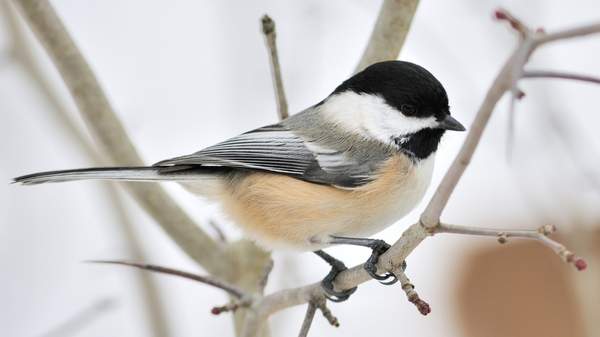
Once they find a partner, they will stay together for life – very romantic and loyal! The female bird will build the nest whilst the male feeds the female after gathering food from various places.
Once they have hatched their eggs, both the male and female will search for food for their family, so they are both very hands-on parents!
Massachusetts State Flower
Massachusetts adopted the Mayflower (Epigae regens) as the official state flower in 1918. Mayflowers are known for their beauty and aromatic smell, unfortunately, they have been endangered since 1925. They tend to grow best on sandy or rocky soil, either underneath or nearby evergreens and can still be found throughout Massachusetts.
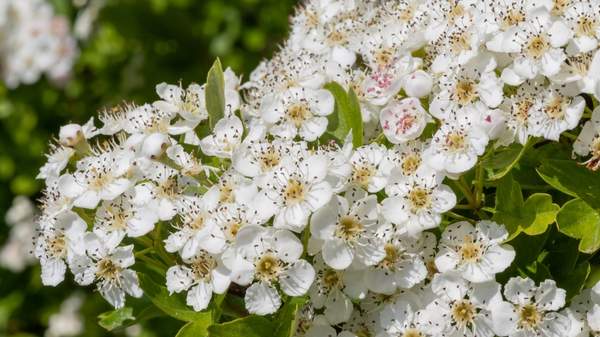
The tubular corolla of this flower can be up to half an inch long (1.3 cm) and are almost as wide at the mouth, expanding into five individual lobes. Inside the tube is incredibly hairy and furry and the flower produces an abundance of nectar, which is why you will typically see bumblebees and other bee species’ around them.
Here are some quick facts about the Mayflower:
- The leaves of the flower contain erioline, ursolic acid, and arbutin, which are all used in urinary antiseptics.
- They are considered to be a “belly plant”, which is when you have to lie on your belly in order to take in the smells and beauty of this flower.
- They grow in an abundance of different places, sand, rocky areas, woods, clearings, hillsides, banks, and underneath oak and pine trees.
- Their blooming period is between March and May.
Massachusetts State Mammal
The famous and unfortunately endangered right whale has been the official state mammal of Massachusetts since 1980. Right whales started becoming more and more threatened due to their name adoption over 800 years ago, many whalers were calling them “right” as it was the right whale to hunt due to their slow movement and swimming pattern, always close to the shore.
They are such big whales that have a lot of fat, which is what attracted many to begin hunting them in the first place. Whale oil is also used for lamps and perfume, and unfortunately, right whales have an abundance of this too.
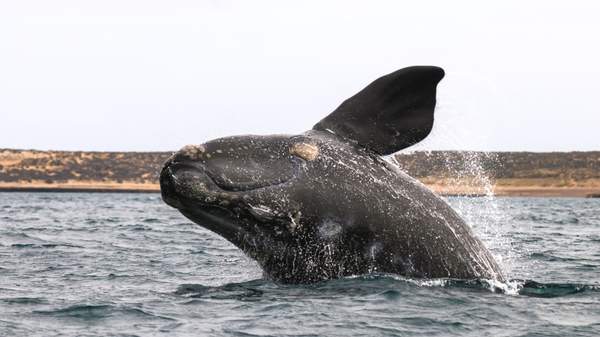
When the 1800s rolled around, there were so few right whales left that hunters began moving on to the next whale as they would spend too long searching for them. Today, there are only an estimated 350 left in the wild. Despite the efforts of environmentalists and others over the years, scientists still believe that their extinction is inevitable.
But it isn’t whalers causing the problem anymore, many professionals believe that the pollution in the ocean is causing krill and plankton populations to decrease, which will directly affect these whales as that is what they feed on.
Right whales will also take up to 5 years to let their calves roam free in the wild, which is a long time to be protecting a small child from the dangers the open ocean poses.
Massachusetts State Fish
Codfish became the Massachusetts state fish back in 1974. However, the cod has been a symbol of the state for over 200 years when it was made into a sculpture that still hangs in the Massachusetts House of Representatives!
The fishing industry has played a huge role in the history of the state, with many people believing that Massachusetts would not be as economically comfortable if the fishing industry didn’t play such a huge part. Unfortunately, today, the Atlantic cod has been listed as a threatened species.
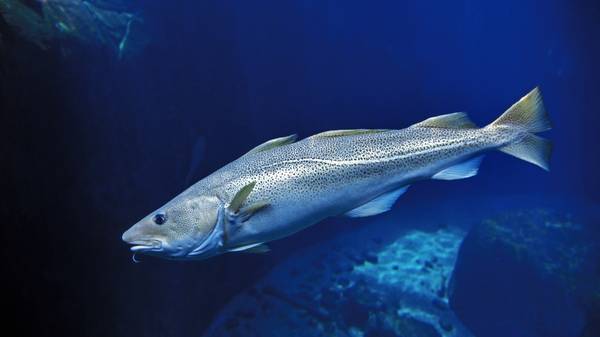
There are actually three different species of codfish around the world, Atlantic, Pacific, and Greenland cod. Typically, they occupy the cold waters of the Atlantic and Pacific oceans, they prefer to go deep when the water temperature increases and have been known to swim to depths of 200+ feet.
Unfortunately, with the incredibly high demand for codfish in the present day, the numbers of Atlantic cod in the wild are diminishing by the day. Out of the three cod species mentioned previously, the Atlantic cod has been listed as vulnerable and may become an endangered species before we know it.
In terms of their appearance, cod will usually stop growing once they reach 51 inches (130 cm) in length and 55 to 77 pounds in weight! Some of the larger species of cod will even reach 200 pounds! Their body coloration usually consists of green/brown colors, with a much lighter belly.
Massachusetts State Insect
Massachusetts adopted the ladybug as the official state insect in 1974, thanks to the help and lobbying from a second-grade school class located in the town of Franklin. It is not just Massachusetts that has adopted the ever-popular ladybug, in fact, 5 other states have too; Delaware, Ohio, New York, New Hampshire, and Tennessee.
Not only are ladybugs awesome-looking insects, but they provide a great deal of help to gardeners and farmers by feeding off the pests and parasites that live on and damage plants, and they have big appetites, consuming around 60 per day.
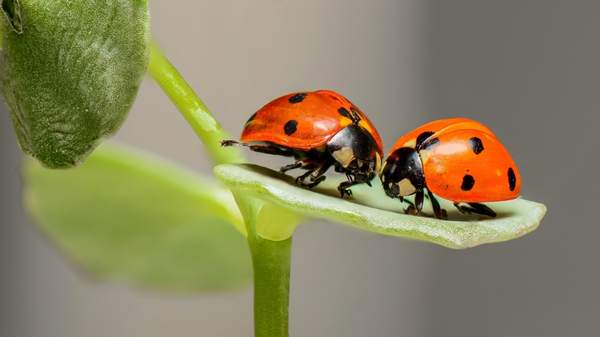
Interestingly enough, ladybugs are a part of the beetle family, not the bug family, they are classed as beetles, not bugs despite the name. Beetles are the largest insect family in the world and there are over 300,000 known species of them in the wild, with ladybugs being one of the smallest species.
Their big, bright red shell with black-spotted patterns all over it is actually a warning sign to predators. The bright coloration and unique patterns are supposed to scare away frogs, birds, and other potential dangers. When they feel under threat, they will release an oily liquid that smells horrific to put any predators off eating them, they have been known to play dead too.
Massachusetts State Game Bird
Having a state game bird is not exactly usual for states, however, Massachusetts has had one since 1991, the eastern wild turkey (Meleagris gallopavo). The wild turkey is also being used as a symbol by Alabama, Oklahoma, and South Carolina.
There are six main subspecies of turkey that reside in North America and the eastern wild turkey is the largest and most distributed out of all of them. The male turkeys are called “Tom” and they can grow up to four feet tall, weighing 20 pounds or more! The hens on the other hand are usually the same height but only weigh around 14 pounds.

Similar to peacocks, but probably not as colorful, male turkeys will typically strut around with their chest out and feathers ruffled in the hopes to attract a female to mate with. This goes down in early spring and the male turkey’s head will also go red during the mating season.
The females will lay around 12 eggs, sometimes more, and other times less. She will spend roughly a month (28 days) incubating the eggs and will then go looking for worms, nuts, and fruits to feed them. When she has laid her eggs, the male will have nothing to do with the baby turkeys.
Massachusetts State Tree
The American elm (Ulmus Americana) has been the Massachusetts state tree since 1941. It was adopted to commemorate the situation when George Washington took over the command of the Continental Army directly beneath an American elm tree located on Cambridge Common back in 1775.
Unfortunately, these native American trees have been reducing in numbers rapidly thanks to the introduction of a European tree disease called (Dutch elm disease), which came over to the U.S. back in 1941 and has been wiping them out ever since.

Nowadays, due to the infamous dutch elm disease, these beautiful trees which once lived for 200 years or more are subject to a much shorter lifespan, with 30 years being the average age of these trees before they die.
The American elm tree has always been special in the eyes of many, they are unique trees that have some pretty special properties. Some of these properties are rapid growth rate, adaptability to an abundance of different climates, resistance to wind damage, and they do not require very much if any pruning at all.
Massachusetts State Berry
Massachusetts is one of the few U.S. states to have a berry as one of its historical symbols. It was in 1994 after a fifth-grade class on the North Shore managed to get the cranberry (Vaccinium macrocarpon) as an official and recognized state symbol, at this point in time cranberry juice had already become the official state beverage.
Cranberries may be a beautiful and attractive-looking fruit but the reality is that they grow in the bogs and marshes of the Northern United States, and Southern Canada, after being created by glacial deposits. There are actually only three commercially cultivated fruits that are native to the USA, and cranberries are a part of them, including grapes and blueberries too.
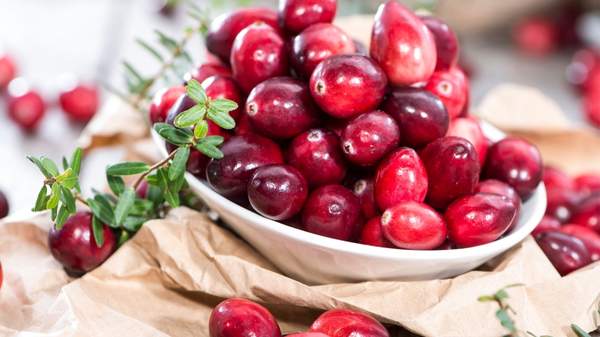
For most families in the U.S., you will likely see cranberries featured on their Thanksgiving meal as well as Christmas dinner and other special occasions. Most American people have been eating cranberries for hundreds of years, in many different varieties. You can eat them raw, fried, dried, boiled, baked, and more.
The Native Americans used to use cranberries for dying their robes, blankets, rugs, and most other materials. They also believed that the cranberry helped draw the poison out of arrow wounds that their soldiers had sustained in battle. Pilgrims were the first to learn about the berry and its seemingly magical properties from the natives.
Massachusetts State Beverage
The official state beverage for Massachusetts is rather unsurprisingly cranberry juice, to coincide with the state fruit being cranberries. It has been the official beverage of Massachusetts since 1970, paying more homage to the state’s impressive cranberry industry which helped shape the economic landscape we see today in Massachusetts.
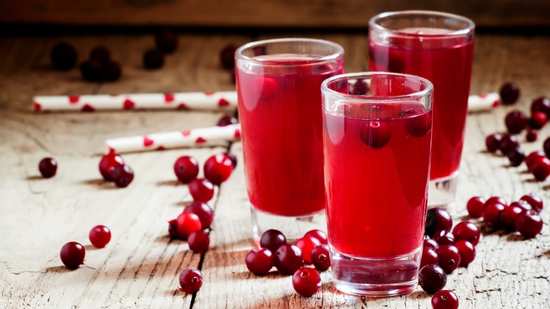
Cranberries are in the same family as blueberries (Vaccinium), and both of these fruits are native to North America. They were introduced to Europe by the Native Americans giving them to the early European settlers, and the juice was originally made by the colonists in 1683. However, the fruit was actually never commercially produced until 1930!
Massachusetts State Cat
The tabby cat (Felis familiaris) is the official Massachusetts state cat and has been since its adoption in 1988. The adoption of this state symbol came from the efforts of the schoolchildren of Massachusetts, who rallied for some time before the tabby cat was adopted.
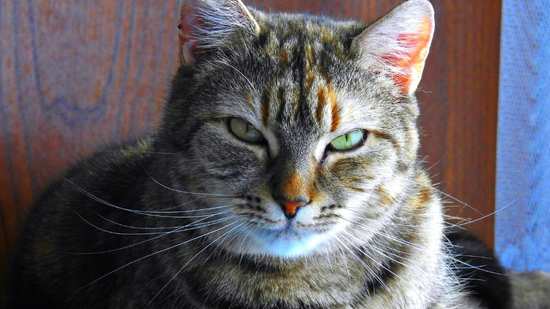
It is pretty rare for a cat to be a state symbol, but there are some other states who have used the cat to represent their state and its history in some way or another. Maine, Maryland, Colorado, Tennessee, and California have all adopted cats and dogs as their state symbols over the past several years.
It may come as a surprise to some people to know that tabby cats are not a specific breed of cat, they are, in fact, called this due to their stripy fur coats!
Massachusetts State Donut
The delicious Boston cream donut became the Massachusetts state donut officially in 2003, along with some other sweet treats used to represent the state.
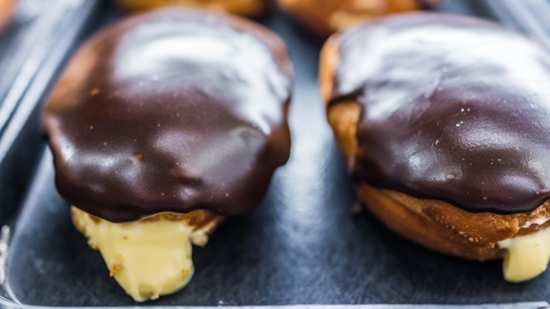
Boston donuts have become somewhat of a famous treat associated with the state and more specifically the city of Boston. They are a classic donut with a chocolate top and a creamy filling, perfect for a dessert or a sweet treat on the go.
Massachusetts State Cookie
The infamous chocolate chip cookie became the official state cookie of Massachusetts on July 9, 1997 thanks to the efforts of a third-grade class from Somerset, MA. These students proposed the bill which would make the cookie become an official symbol after it was invented in 1930 at the Toll House Inn restaurant located in Whitman, Massachusetts.
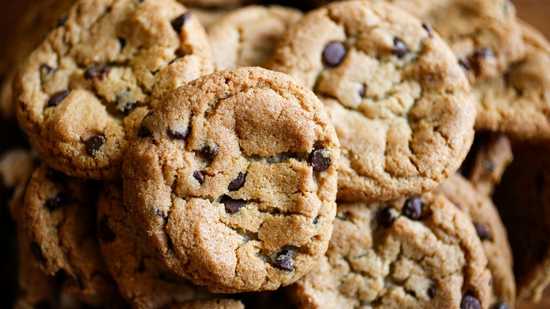
Chocolate chip cookies were invented by Ruth Graves Wakefield, the owner of the now-famous Toll House Inn, which was at the time an incredibly popular restaurant within the state. Her cookbook was published a few years after the invention of the chocolate chip cookie, in 1936 by M. Barrows & Co, New York.
However, this cookbook never featured the chocolate chip cookie, it wasn’t until the 1938 addition came out that the recipe for her famous cookie came out, the “Toll House Chocolate Crunch Cookie” – and it didn’t take long until it became a favorite among Americans and shortly after, then the world!
Massachusetts State Seal
The famous and iconic state seal of Massachusetts below, which was adopted in 1780, displays the coat of arms of the Commonwealth of Massachusetts, which is surrounded in an almost semi-circle shape by the words “Sigillum Reipublicae Massachusettensis” – this Latin phrase translates to “Seal of the Republic of Massachusetts”.
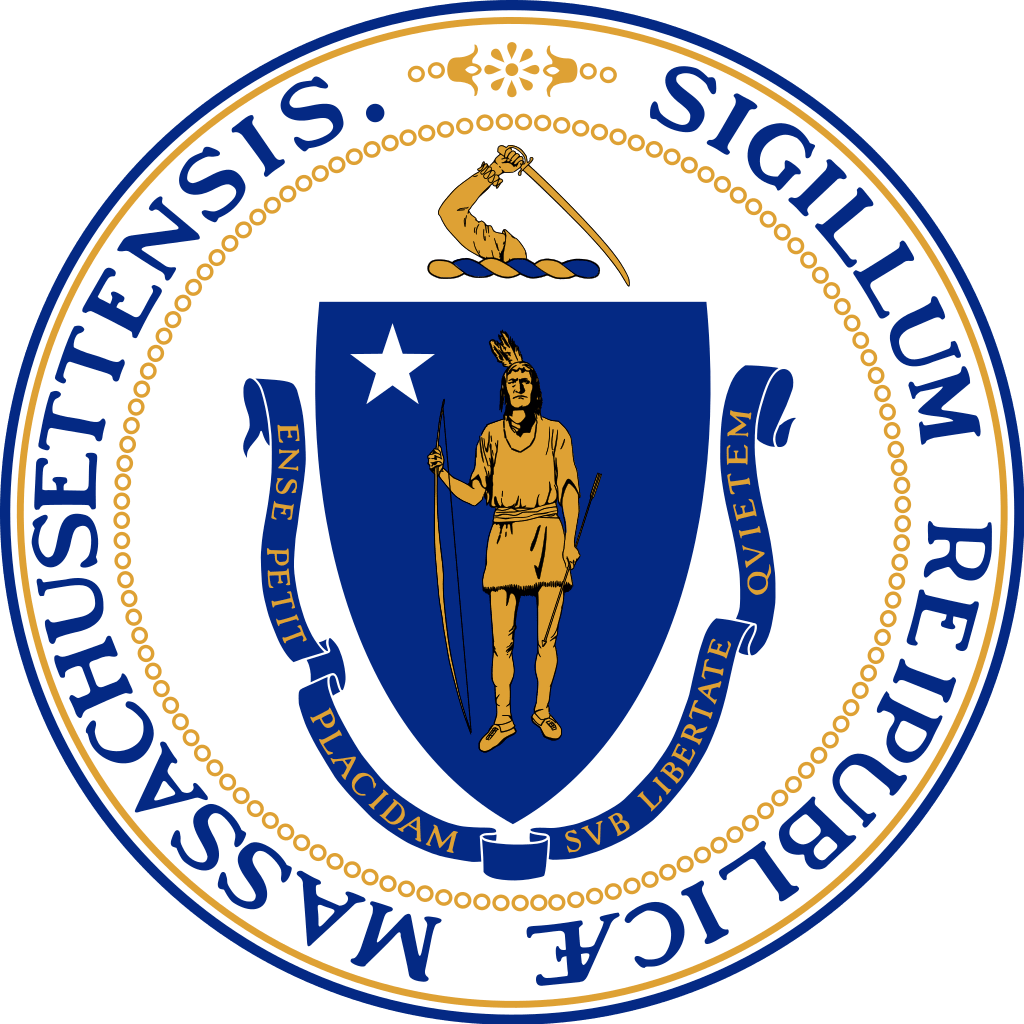
The blue shield in the middle of the seal displays a Native American of the Algonquin Nation tribe, holding a bow in his right hand and an arrow in his left, the arrow is pointing downward, which is an indication of peacefulness. There is also a 5-pointed silver star just above his right arm, which represents Massachusetts as one of the 13 original states!
All Massachusetts State Symbols (Table)
Now that we have taken a look at some of the more popular and notable state symbols that are associated with the state of Massachusetts, it makes sense to showcase all the Massachusetts state symbols that are best used to represent the state’s history and present achievements and moments. Here is the complete list of symbols along with the dates they were enacted:
| Type Of Symbol | State Symbol | Year |
|---|---|---|
| Massachusetts State Artist | Norman Rockwell | 2008 |
| Massachusetts State Bean | Baked Navy Bean | 1993 |
| Massachusetts State Berry | Cranberry | 1994 |
| Massachusetts State Beverage | Cranberry Juice | 1970 |
| Massachusetts State Bird | Chickadee | 1941 |
| Massachusetts State Blues Artist | Henry St. Clair Fredericks | 2006 |
| Massachusetts State Building & Monument Stone | Granite | 1983 |
| Massachusetts State Cat | Tabby Cat | 1988 |
| Massachusetts State Ceremonial March | "The Road to Boston," composer unknown | 1985 |
| Massachusetts State Colors | Blue, green, and cranberry | 2005 |
| Massachusetts State Cookie | Chocolate Chip Cookie | 1997 |
| Massachusetts State Dessert | Boston Cream Pie | 1996 |
| Massachusetts State District Tartan | Bay State Tartan | 2003 |
| Massachusetts State Dog | Boston Terrier | 1979 |
| Massachusetts State Donut | Boston Cream Donut | 2003 |
| Massachusetts State Explorer Rock | Dighton Rock | 1983 |
| Massachusetts State Fish | Cod | 1974 |
| Massachusetts State Flag | State and Civil Flag | 1971 |
| Massachusetts State Flower | Mayflower | 1918 |
| Massachusetts State Folk Dance | Square Dance | 1990 |
| Massachusetts State Folk Hero | Johnny Appleseed, born John Chapman in 1774 | 1996 |
| Massachusetts State Folk Song | "Massachusetts," words and music by Arlo Guthrie | 1981 |
| Massachusetts State Fossil | Dinosaur Tracks | 1980 |
| Massachusetts State Game Bird | Wild Turkey | 1991 |
| Massachusetts State Gem | Rhodonite | 1979 |
| Massachusetts State Glacial Rock | Rolling Rock in Fall River | 2008 |
| Massachusetts State Great Seal | Great Seal of the State of Massachusetts | 1780 |
| Massachusetts State Horse | Morgan Horse | 1970 |
| Massachusetts State Insect | Lady Bug | 1974 |
| Massachusetts State Inventor | Benjamin Franklin | 2006 |
| Massachusetts State Marine Mammal | Righe Whale | 1980 |
| Massachusetts State Mineral | Babingtonite | 1971 |
| Massachusetts State Muffin | Corn Muffin | 1986 |
| Massachusetts State Poem | "Blue Hills of Massachusetts," composed by Katherine E. Mullen | 1981 |
| Massachusetts State Recreational Sport | Volleyball | 2014 |
| Massachusetts State Reptile | Garter Snake | 2007 |
| Rock or Rock Emblem | Roxbury Puddingstone | 1983 |
| Massachusetts State Shell | New England Neptune | 1987 |
| Massachusetts State Soil | Paxton Soil Series | 1990 |
| Massachusetts State Song | "All Hail to Massachusetts." words and music by Arthur J. Marsh | 1981 |
| Massachusetts State Sport | Basketball | 2006 |
| Massachusetts State Tree | American Elm | 1941 |
